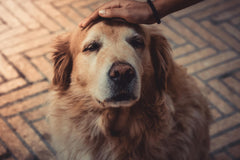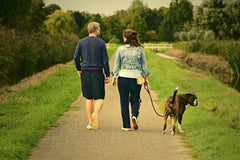
If you are in the market for a smart, hardworking, and confident dog breed, the Belgian Malinois might be the perfect match for you!
However, there are some things you need to know about this breed before running off to the Malinois rescue center to adopt this dog.
With their rich history and legacy as being a herding dog, the Malinois is a breed to learn about and not to be mistaken with the German Shepherd. They do look very much alike but are a different breed entirely.
History: Where Did the Belgian Malinois Come From?

The Belgian Malinois is one of four Belgian Shepherd dogs who were named after villages in Belgium: Tervuren, Malinois Shepherd (Mechelar), Laekenois, and Groenendael. In the 1880’s the Malinois Shepherd along with the German Shepherd, Dutch Shepherd, and French Shepherd were known as the “continental Shepherd dogs”. A club was even formed for their sake.
The Belgian Malinois Shepherd and the Groenendael Shepherd both showed up in America in the 1900s. It wasn’t until the 1950’s that trainers began to show the Malinois Shepherd in the American Kennel Club dog shows in America.
Malinois Dog Temperament

The Malinois Shepherd is the kind of dog that seems to exist to be the perfect police and guard dog.
This breed excels at skills such as obedience in general, sniffing out bombs, drugs, and even gas leaks, search and rescue, and they even make great therapy and service dogs. This breed of dog wants nothing more than to be out and around their people. Meaning, they are not the right breed for someone who would be keeping them locked up in a kennel more often than not.
Their temperament ranges from calm to aggressive, so it takes a person who is experienced with dealing with breeds like the Malinois to handle and train them. They also have an innate protective and territorial temperament about them once they’ve found their forever family and have come home from the Malinois rescue.
Another personality trait to be aware of and prepared for is their high energy levels. The Malinois Shepherd is a very energetic breed of dog who will require at least 40 minutes of exercise per day. This could be in a big, fenced-in backyard or on walks/jogs with their owner.
Care Needs

As far as diet goes, any high-quality dog food, store-bought, fresh dog food or homemade dog food, will do. They are athletically built dogs, so as long as they are staying active, they will need the nutrition to supplement the physical activity. Some Shepherds are prone to becoming overweight so it's important to be mindful of their calorie intake as well as any dramatic weight changes.
The fur of the Malinois is said to be waterproof. That and it being short and wiry makes upkeep very simple and easy. They only really need regular bathing and some occasional brushing. They are known to shed twice a year, which can vary depending on the climate where you live. Using a brush more often during these periods of upkeep is recommended to keep the shedding to a minimum.
Training

Early socialization and obedience training are crucial with this breed. Because they are a herding dog by nature, their first instinct will be to want to chase moving objects down in order to “herd” them. Objects such as children and cars, which can be dangerous if they are not trained properly.
Once trained properly the Malinois Shepherd is an incredibly intelligent and obedient dog. This is why they make such great police and therapy dogs. They are dedicated to their master and getting the job done.
Health Conditions

Typically, breeders will have screened their dogs for any underlying health issues before breeding them or at least disclose any potential issues that puppies may face in their future. The Malinois Shepherd is a generally healthy breed of dog. They do, however, sometimes face joint issues such as hip or elbow dysplasia. Some also are known to face certain eye issues, which should also be something disclosed by the breed upon the time of adoption.
Conclusion
If you are in the market for a smart and obedient dog who can also protect you and your family, the Malinois Shepherd might just be the perfect dog for you. That is if you are prepared to put in the work to train them or at least take them to obedience classes from an early age. Obedience classes will help to curb and retrain their instinct to run and chase after things they shouldn't. As well as allow for socialization time while the classes, which is just as important.
Aside from their training needs, the Malinois Shepherd is a great family dog. They love their humans and being around them. Not to mention how good of a guardian they would be of their family. The Malinois Shepherd is certainly a great dog for someone who has the time and patience for them.
How much is a Belgian Malinois?
How to train a Belgian Malinois?
How big do Belgian Malinois get?
Check out our blog and follow me on LinkedIn to stay up-to-date!





Comments
I’m getting a German shepherd and Belgian Malinois mix
I have two dog and two cats and lots of farm animals
I’m not sure how old but I will have more info tomorrow when I pick her up
I have not had that dog breed but I have an Aussie clue heeler and border collie mix so energy is not a problem.
I thinking of getting a shock cooler for training since it has worked well on my dog.
if anyone has any advice please help.
I have a 4ft fence and I live on 2 1 /2 acres
with 2 horses and 36 chickens
thank you
Yesterday at our local humane society I found an older Belgium female.
She looks like recently she had had a litter.
She was thin, however not food aggressive when I gave her treats.
She seemed to b on watch as people were walking by.
I do plan on going back tomorrow and hopefully walking her if she has not been adopted.
I at one time raised Rottweilers , showed and agility.
Always around large powerful animals who were a delight.
Would you recommend adopting an older Belgian?
I am a very active older lady.
I look forward to your reply. Thank you.